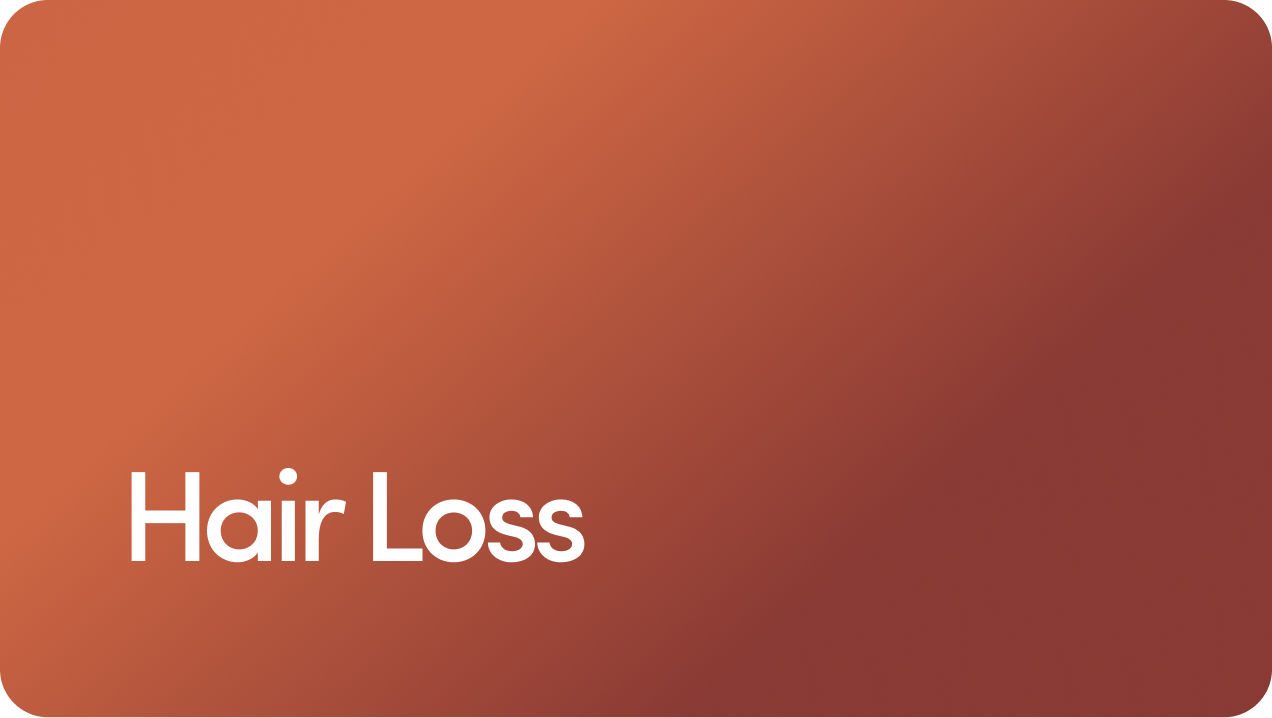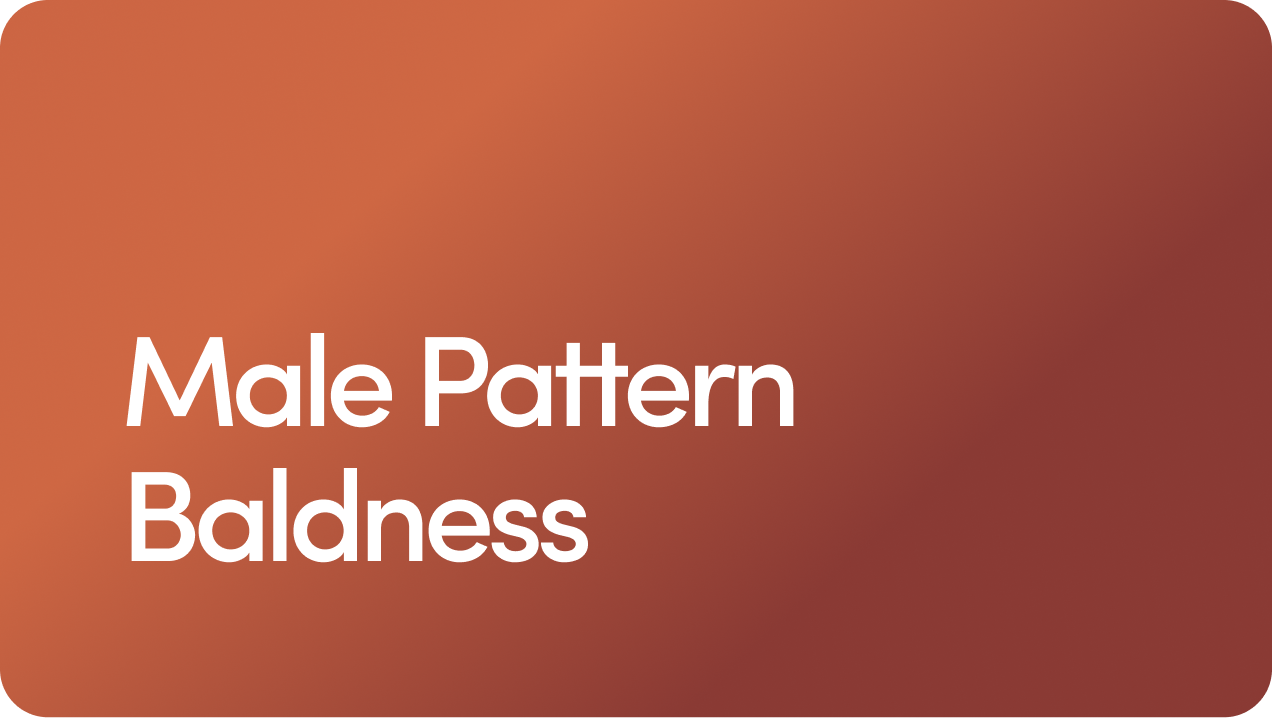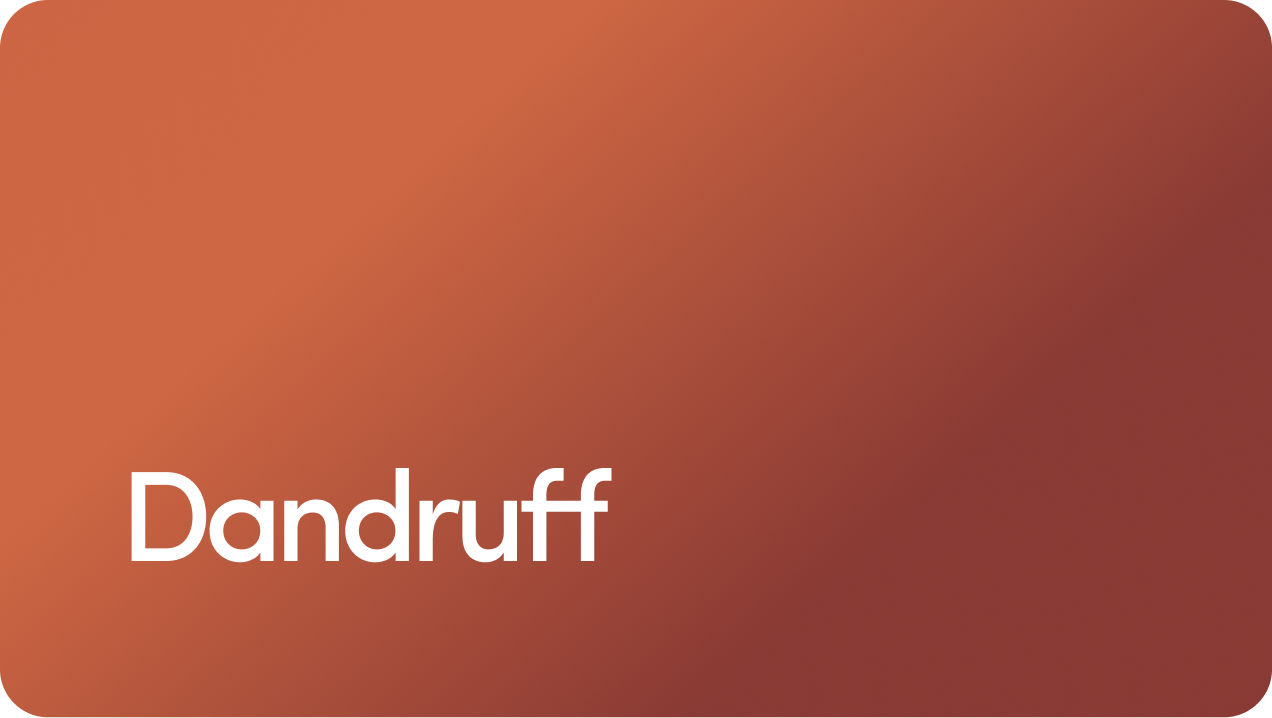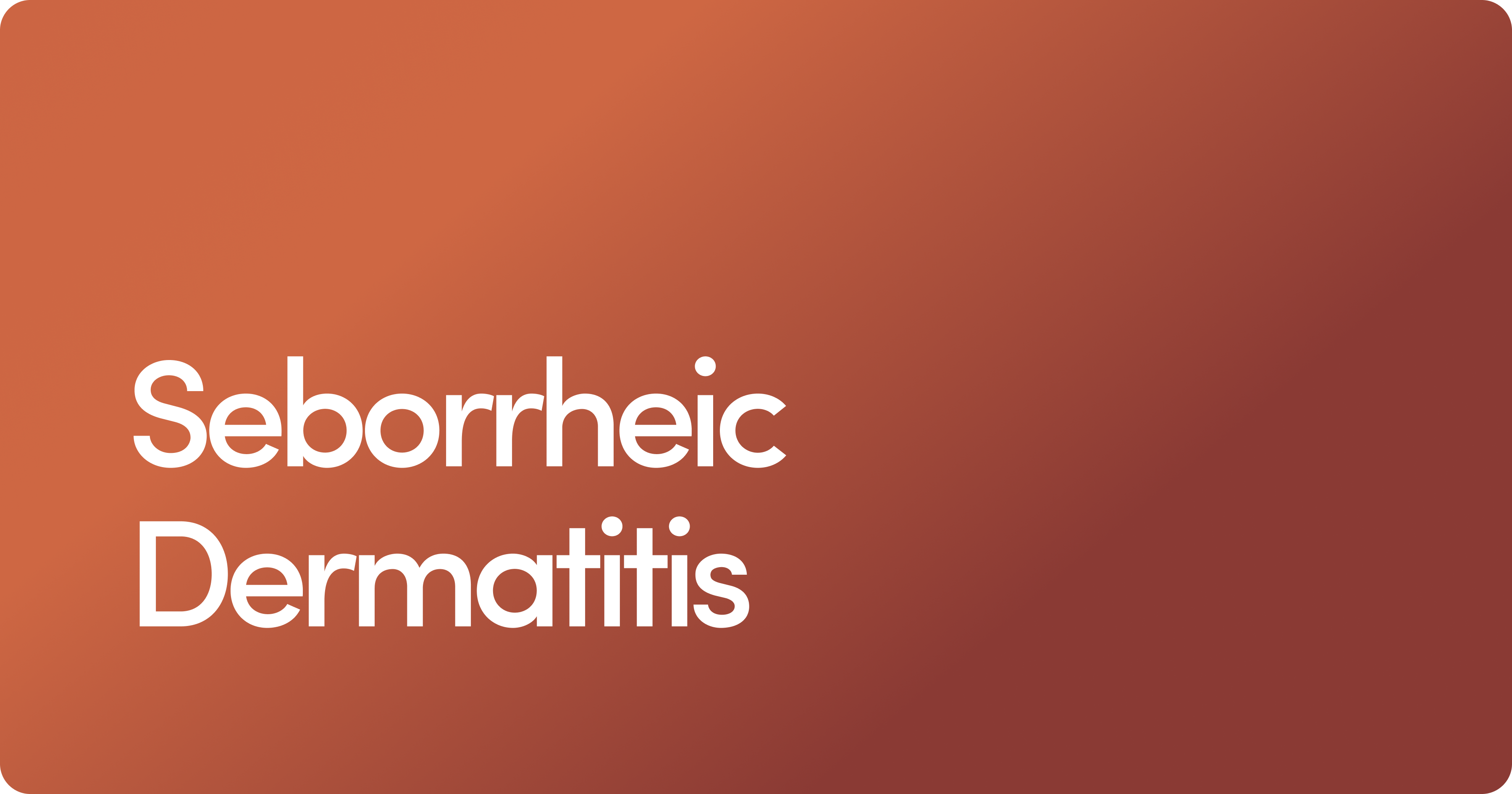Content
FDA approved for more than 25 years
Cinnamon for Hair Growth: Research, Benefits, and Alternatives

Cinnamon, widely known for its warm, aromatic flavor, is used as a home remedy for everything from acne to hair health.
But can you use cinnamon for hair growth — or is that just a myth?
The short answer is: Kind of? Cinnamon can support hair health, but there’s little data out there on whether it can actually treat hair loss.
Many people use oils for hair growth, including cinnamon essential oil. But most of these natural remedies aren’t backed up by much data.
Read on to learn more about the benefits of cinnamon for hair health, explore the science behind the claims, and get some practical tips on using this trending natural remedy for hair health.
Content
Does Cinnamon Improve Hair Growth?
In short: There’s very little research that proves cinnamon can treat hair loss or stimulate hair growth.
The available research, while interesting, doesn’t definitively prove anything.
For example, a 2019 review found multiple studies that suggest procyanidin could improve hair growth. Cinnamon does contain procyanidin — but the procyanidin in those studies was extracted from apple juice, not cinnamon.
One 2018 animal study looked at the effects of cinnamon oil on hair growth in rats. The study found cinnamon oil as effective as 2% minoxidil, an FDA-approved hair loss treatment.
However, we’ll need plenty more studies — including studies conducted on humans — before we can figure out whether cinnamon can improve hair growth or treat hair loss.
Still, there are a number of possible benefits of using cinnamon for hair health. Let’s dig into those benefits below.
Benefits of Cinnamon for Hair Health
Derived from Cinnamomum plants, cinnamon has been used in traditional medicine for centuries. It has antioxidant, anti-inflammatory, and antimicrobial properties, making it a versatile home remedy.
Cinnamon could support hair health, though much of the evidence remains anecdotal or based on its biological properties rather than rigorous clinical studies.
Let’s take a closer look at how cinnamon may contribute to healthier hair and a thriving scalp environment.
1. Cinnamon Might Boost Scalp Circulation
Cinnamon contains cinnamaldehyde, a compound that widens the blood vessels. By widening your blood vessels, it can improve circulation.
Enhanced scalp circulation delivers more oxygen and nutrients to hair follicles, which may support healthy hair growth. In the 2018 rat study mentioned above, researchers speculated that cinnamon improved hair growth because cinnamaldehyde stimulates blood flow.
While there’s no direct evidence linking cinnamon to faster hair growth, increased blood circulation can create the ideal conditions for follicles to thrive.
2. It Could Help With Dandruff and Scalp Infections
Cinnamon’s antimicrobial properties may help fight bacterial and fungal infections on the scalp.
A 2013 study found that cinnamon extract can reduce the growth of Malassezia, a type of yeast that causes dandruff, seborrheic dermatitis, and other skin conditions.
Cinnamon’s antimicrobial properties might also be helpful in defending your scalp against folliculitis, a skin condition that causes painful, inflamed bumps on your hair follicles. Folliculitis can cause hair follicle damage, which can also affect growth.
By supporting a clean and healthy scalp environment, cinnamon may reduce these risks and support healthier hair.
3. It Reduces Inflammation
Chronic inflammation of the scalp can disrupt the hair growth cycle and lead to increased hair fall.
Cinnamon contains anti-inflammatory compounds that may soothe irritation, reducing redness, itching, and discomfort. While the effects may vary, a healthy, non-inflamed scalp is essential for optimal hair health.
4. It Could Protect Against Oxidative Stress
Cinnamon is rich in antioxidants like polyphenols, which neutralize free radicals that cause oxidative stress.
Oxidative stress can damage hair follicles and accelerate hair thinning. By protecting the scalp and hair from this type of damage, cinnamon may contribute to stronger, healthier strands over time.
How to Use Cinnamon for Hair
If you’re curious about trying cinnamon as part of your hair care routine, there are several ways to incorporate it.
Because there’s a lack of research on the benefits of cinnamon for hair health, there’s no solid evidence on the best way to use it. For example, it’s not clear whether it’s better to add cinnamon to your food or use it topically.
Cinnamon Oil for Scalp
You can purchase cinnamon essential oil and dilute it to make your own hair oil. It’s important to avoid using cinnamon oil directly on your scalp, as it’s highly concentrated and may irritate your skin.
Here’s one way to use cinnamon essential oil:
Dilute it with a carrier oil like coconut, almond, or jojoba oil. A ratio of one drop of cinnamon oil per tablespoon of carrier oil is a good recipe to start with.
Apply the mixture to your scalp and massage gently for 5-10 minutes to stimulate circulation.
Leave the oil on for 20-30 minutes before washing it out with a gentle shampoo.
Be sure to perform a patch test before using cinnamon essential oil, as it can be potent and irritating if not properly diluted.
Cinnamon Hair Mask
A DIY cinnamon hair mask combines the benefits of cinnamon with other nourishing ingredients to improve hydration and scalp health.
Here’s how to make your own hair mask:
Mix 1 tablespoon of ground cinnamon with olive oil or coconut oil. You can also add honey if you’d like.
Apply the mask to your scalp and hair, focusing on the roots.
Leave it on for 20 minutes. To reduce the mess, wear a shower cap.
Rinse your hair thoroughly and follow up with shampoo and conditioner.
Honey adds hydration, while oil helps lock in moisture, making this mask a great option for dry or damaged hair.
Cinnamon Scalp Exfoliation
We often neglect scalp care — but a healthy scalp is important for growing healthy hair.
Ground cinnamon can act as a natural exfoliant to remove dead skin cells, excess oil, and product buildup from your scalp.
You can combine ground cinnamon with coconut oil or olive oil and massage it directly into your scalp. Wash your scalp thoroughly with shampoo when you’re done with the massage.
Cinnamon in Your Diet
Incorporating cinnamon into your diet is one of the easiest and most effective ways to harness its health benefits.
A healthy diet rich in antioxidants and anti-inflammatory compounds helps create the conditions for strong, healthy hair growth.
You can add cinnamon to oatmeal, yogurt, or smoothies. You can also try it as a natural sweetener in your coffee.
It’s not clear whether eating cinnamon actually does anything for your hair. But it’s worth adding to your diet — if not for your hair, for your overall health.
Cinnamon is generally safe for topical use when diluted, but it may have a few side effects.
Here are some potential drawbacks of using cinnamon for hair:
Scalp irritation. Cinnamon can cause irritation and burning if not diluted properly. Perform a patch test before applying it to your scalp.
Overexfoliation. If you’re using cinnamon to exfoliate your scalp, be sure not to exfoliate it too much. Doing so can leave your skin tender and irritated.
Allergic reactions. While cinnamon allergies are rare, they can happen. If you think you may be allergic to cinnamon, even mildly, avoid it altogether.
Drying effect. Overusing cinnamon powder or essential oil may dry out the scalp, so balance it with hydrating ingredients.
Overall, cinnamon is safe — just be cautious.
While cinnamon can be a complementary addition to your hair care routine, it can’t replace proven treatments.
Most hair loss conditions, like androgenic alopecia (male pattern hair loss), get worse over time — so it’s important to get the right treatment ASAP when you notice the early signs of balding.
Here are some science-backed hair loss treatments:
Minoxidil. A topical treatment approved by the FDA, minoxidil stimulates hair follicles and promotes regrowth. It’s available as minoxidil foam and minoxidil solution.
Finasteride. This FDA-approved medication blocks DHT, the hormone responsible for male pattern baldness. Finasteride helps slow hair loss and can encourage regrowth in some cases.
Combo treatments. Combining finasteride and minoxidil is a safe and effective way to treat male pattern hair loss. Try our topical finasteride & minoxidil spray.
Hair growth supplements. If a nutritional deficiency is affecting your hair growth, consider supplementing with the relevant nutrients. Our biotin gummies contain a range of hair-supporting vitamins.
Hair loss shampoos. Some hair care products include DHT-blocking ingredients to slow down male pattern baldness. Our thickening shampoo contains saw palmetto, a natural DHT blocker.
Want to learn more? Check out our blog post on natural remedies for hair loss.
If you’re dealing with hair loss but aren’t sure where to start, speak with a healthcare practitioner. They can help you figure out what’s causing your hair loss and how to treat it.
Is cinnamon good for your hair? Probably, yes — but there’s little to no evidence that it can boost hair growth.
Before using this spice on your scalp, there are a few things to keep in mind:
Cinnamon may benefit your hair. Certain compounds in cinnamon may improve circulation, reduce inflammation, and fight microbial overgrowth.
But the evidence is flimsy. There are very few studies that directly look at the effects of cinnamon on hair health in humans.
There are many ways to use it. If you’d like to use cinnamon still, you can try it as a hair mask, scalp treatment, or exfoliation — or just add it to your diet.
For significant hair loss concerns, however, it’s best to turn to scientifically-supported treatments and consult with an expert. We can help you book a virtual appointment with a licensed healthcare provider, who can guide you on your options.
Cinnamon might not be a miracle cure, but it could be a worthwhile addition to your self-care regimen. At the very least, your hair will smell incredible.
11 Sources
- Ali SS, et al. (2020). Understanding oxidants and antioxidants: Classical team with new players. https://pubmed.ncbi.nlm.nih.gov/31960481/
- Cinnamon. 2024. https://www.nccih.nih.gov/health/cinnamon
- Gunawardena D, et al. (2015). Anti-inflammatory activity of cinnamon (C. zeylanicum and C. cassia) extracts - identification of E-cinnamaldehyde and o-methoxy cinnamaldehyde as the most potent bioactive compounds. https://pubmed.ncbi.nlm.nih.gov/25629927/
- Schink A, et al. (2018). Anti-inflammatory effects of cinnamon extract and identification of active compounds influencing the TLR2 and TLR4 signaling pathways. https://pubmed.ncbi.nlm.nih.gov/30379176/
- Xue YL, et al. (2011). Vasodilatory effects of cinnamaldehyde and its mechanism of action in the rat aorta. https://pmc.ncbi.nlm.nih.gov/articles/PMC3096507/
- Jain S, et al. (2022). Essential oils as potential source of anti-dandruff agents: A review. Combinatorial Chemistry & High Throughput Screening. https://doi.org/10.2174/1386207324666210712094148
- Indriana L, et al. (2018). Topical application of cinnamon (cinnamomum burmanii) essential oil has the same effectiveness as minoxidil in increasing hair length and diameter size of hair follicles in male white Wistar rats (rattus norvegicus). https://ijaam-unud.org/ojs/index.php/ijaam/article/view/19/9
- Mariappan PM, et al. (2013). Chemical characterisation and antifungal activity of methanolic extract of Cinnamomum verum J. Presl bark against Malassezia spp. https://www.sciencedirect.com/science/article/abs/pii/S0975357513000679
- Martini N. (2015). Cinnamon. https://www.publish.csiro.au/HC/pdf/HC15077
- Murphrey MB, et al. (2020). Anatomy, hair. https://www.ncbi.nlm.nih.gov/books/NBK513312/
- Hosking, A, et al. (2018). Complementary and Alternative Treatments for Alopecia: A Comprehensive Review. https://karger.com/sad/article-abstract/5/2/72/291462/Complementary-and-Alternative-Treatments-for?redirectedFrom=fulltext
Editorial Standards
Hims & Hers has strict sourcing guidelines to ensure our content is accurate and current. We rely on peer-reviewed studies, academic research institutions, and medical associations. We strive to use primary sources and refrain from using tertiary references. See a mistake? Let us know at [email protected]!
This article is for informational purposes only and does not constitute medical advice. The information contained herein is not a substitute for and should never be relied upon for professional medical advice. Always talk to your doctor about the risks and benefits of any treatment. Learn more about our editorial standards here.
Knox Beasley, MD
Education
Bachelor of Science, Life Sciences. United States Military Academy.
Doctor of Medicine. Tulane University School of Medicine
Training
Dermatology Residency. San Antonio Uniformed Services Health Education Consortium
Certifications
Board Certified. American Board of Dermatology
Medical Licenses
Dr. Beasley is licensed in all 50 states
Affiliations & Memberships
Fellow, American Academy of Dermatology
Specialties & Areas of Focus
Hair Loss, Dermatology
Years of Experience
10 years of clinical practice as a Dermatologist
Previous Work Experience
Medical Director - YouHealth Medical Groups, 2025–
Private practice, 2024–
Chief of Dermatology - , 2015–2019
Publications
Wilson, L. M., Beasley, K. J., Sorrells, T. C., & Johnson, V. V. (2017). Congenital neurocristic cutaneous hamartoma with poliosis: A case report. Journal of cutaneous pathology, 44(11), 974–977.
Banta, J., Beasley, K., Kobayashi, T., & Rohena, L. (2016). Encephalocraniocutaneous lipomatosis (Haberland syndrome): A mild case with bilateral cutaneous and ocular involvement. JAAD case reports, 2(2), 150–152.
Patterson, A. T., Beasley, K. J., & Kobayashi, T. T. (2016). Fibroelastolytic papulosis: histopathologic confirmation of disease spectrum variants in a single case. Journal of cutaneous pathology, 43(2), 142–147.
Beasley, K., Panach, K., & Dominguez, A. R. (2016). Disseminated Candida tropicalis presenting with Ecthyma-Gangrenosum-like Lesions. Dermatology online journal, 22(1), 13030/qt7vg4n68j.
Kimes, K., Beasley, K., & Dalton, S. R. (2015). Eruptive milia and comedones during treatment with dovitinib. Dermatology online journal, 21(9), 13030/qt8kw141mb.
Miladi, A., Thomas, B. C., Beasley, K., & Meyerle, J. (2015). Angioimmunoblastic t-cell lymphoma presenting as purpura fulminans. Cutis, 95(2), 113–115.
Beasley K, Dai JM, Brown P, Lenz B, Hivnor CM. (2013). Ablative Fractional Versus Nonablative Fractional Lasers – Where Are We and How Do We Compare Differing Products?. Curr Dermatol Rep, 2, 135–143.
Siami P, Beasley K, Woolen S, Zahn J. (2012). A retrospective study evaluating the efficacy and tolerability of intra-abdominal once-yearly histrelin acetate subcutaneous implant in patients with advanced prostate cancer. UroToday Int J, June 5(3), art 26.
Siami P, Beasley K. (2012). Dutasteride with As-Needed Tamsulosin in Men at Risk of Benign Prostate Hypertrophy Progression. UroToday Int J, Feb 5(1), art 93. https://www.urotoday.com/volume-5-2012/vol-5-issue-1/48691-dutasteride-with-as-needed-tamsulosin-in-men-at-risk-of-benign-prostatic-hypertrophy-progression.html
Why I Practice Medicine
Dr. Beasley began doing telemedicine while serving in the U.S. Army, providing dermatologic care for soldiers stationed around the world. This experience sparked his passion for telemedicine and inspired his commitment to expanding access to healthcare for patients across the United States.
Hobbies & Interests
In his free time, Dr. Beasley enjoys cooking, reading, and trips to the beach with his wife and two kids (with sunscreen of course).
Related Articles
Related Conditions
 Hair Loss
Hair Loss
 Male Pattern Baldness
Male Pattern Baldness
 Dandruff
Dandruff
 Scarring Alopecia
Scarring Alopecia
 Seborrheic Dermatitis
Seborrheic Dermatitis
